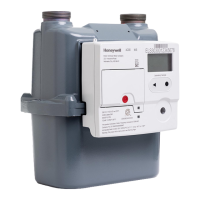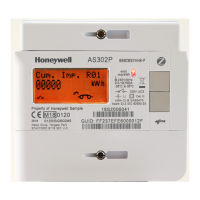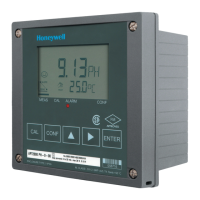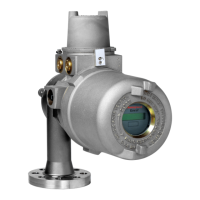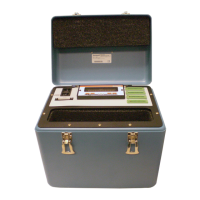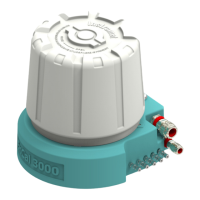41
The units of absorbance (A) are divided into milliabsorbance (mA) units, where 1000 mA
= 1.0 A. When we calibrate for a chemical and collect that spectrum, we determine the
number of milliabsorbance units per ppm of gas concentration for each wavenumber
region where that chemical absorbs IR radiation. Or, if the ACM 150 monitor has a 10 cm
cell for % LEL/LFL ranges, the relation may be expressed as milliabsorbance units per %
concentration.
3.6.5. Analytical methods
3.6.5.1.
Methods development
A method combines individual calibration spectra for a group of chemicals. When we
develop a method, we pre-select the absorbance peak regions that will be used to identify
and quantify each chemical. A few chemicals have only one usable absorption peak, while
many have six or more usable peaks. The average is three usable peaks for qualitative
screening and quantitative analysis.
For each absorbance peak region of each monitored chemical in a method, the
relationship between milliabsorbance units and concentration (usually in ppm) is entered
into a p-matrix that is used to compute the concentration of each gas in all new and
unknown air spectra collected by the ACM 150 monitor.
Sometimes, chemicals within the same method have absorbance peaks that overlap in
the common peak regions. In the simplest expression of the Beer-Lambert Law, the
resulting absorbance peak is the sum of absorbances of the overlapping peaks from each
chemical. The matrix uses more calibration data sets from other wavelength regions to
improve this computation.
The computation accuracy is further improved using advanced data fitting statistical
techniques, known by the broader term of Chemometrics. The technique of PLS (partial
least squares) is employed in the ACM 150 monitor to fit a data set from the unknown air
spectra to the “training” set in the method.
The relationship between the various peak heights in milliabsorbance units and the ppm
concentration is determined and becomes the basis for the quantitative identification of
unknown air spectra.
To confirm that the methods correctly identify and accurately measure the concentrations
of their chemicals, the methods are tested using calibration spectra. This simulates the
analysis of unknown air samples using the methods developed to measure the chemicals
of interest.
It proves that the methods correctly identify and measure all those chemicals, and it is a
valid calibration accuracy test.
Of particular interest is the ability of the ACM 150 monitor to identify and measure these
chemicals at the alarm set points. The concentrations are different since the reference
calibration spectra were not collected with these set points in mind. Nevertheless, the
magnitude of the absorption is directly proportional to the chemical concentration, and the
wavenumber region of every absorption peak is fixed. Therefore, spectra of the chemicals
at any level of milliabsorbance units, including the set point level, will be read accurately.
This can be confirmed by introducing any chemical at or near the set point level in your
ACM 150.

